Green Bank Engineer John Shelton carefully examines the metal plate that runs around the track of the Green Bank Telescope. The track goes 25 feet into the ground to remain sturdy and level. The GBT’s four trucks drive the 17-million pound telescope around on this circle. Each truck has four wheels, meaning each wheel supports one million pounds. Maintenance of this track is critical to the accuracy of the GBT’s observations.
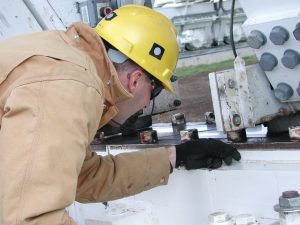
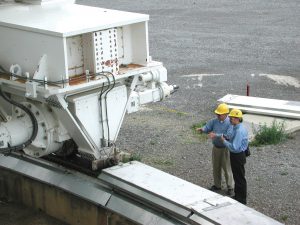
Inspecting the GBT Track
The Green Bank Telescope was constructed in the 1990s, beginning with its huge circular track and support. In this photo, contract engineers are inspecting one of the GBT’s four trucks that drive the 17-million pound telescope in a circle. Each truck has four wheels, meaning each wheel supports one million pounds. The track goes 25 feet into the ground to remain sturdy and level. Metal covers in between the trucks protect the track from snow and dirt.
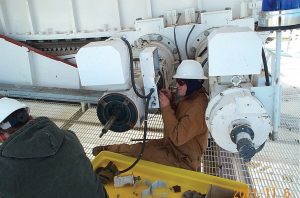
Wiring a Gear Motor on the GBT’s Azimuth Track
The tilting gear of the Green Bank Telescope is driven by four motors. A telescope technician is doing maintenance on one of those motors.
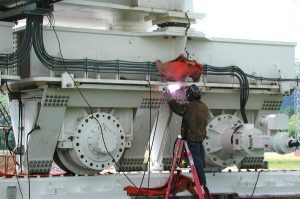
Welding on the GBT Azimuth Trucks
A telescope technician touches up a weld on one of the Green Bank Telescope’s four trucks that drive the 17-million pound telescope in a circle. Each truck has four wheels, meaning each wheel supports one million pounds. The GBT’s track goes 25 feet into the ground to remain sturdy and level. Metal covers in between the trucks protect the track from snow and dirt.
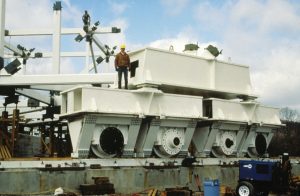
Building the GBT’s Azimuth Track
The Green Bank Telescope was constructed in the 1990s, beginning with its huge circular track and support. In this photo, an engineer is standing on one of the GBT’s four trucks that would eventually drive the 17-million pound telescope in a circle. Each truck has four wheels, meaning each wheel supports one million pounds. The track goes 25 feet into the ground to remain sturdy and level.

Karl Guthe Jansky
Karl Guthe Jansky was born in Norman, Oklahoma on October 22, 1905 and graduated with a degree in physics from the University of Wisconsin. He joined the staff of the Bell Telephone Laboratories in Holmdel, New Jersey in 1928. While hunting for radio static for Bell Labs, Jansky made the surprise discovery of radio waves coming from the center of our Milky Way Galaxy.
Jansky wanted to investigate the radio waves from the Milky Way Galaxy in more detail. He proposed to Bell Labs to build a 100 foot (30 meter) diameter dish antenna. But Bell Labs had the answer they wanted about static: the static was not a problem for transatlantic radio communication. Jansky was assigned to another project and did no more radio astronomy. He died on February 14, 1950.





